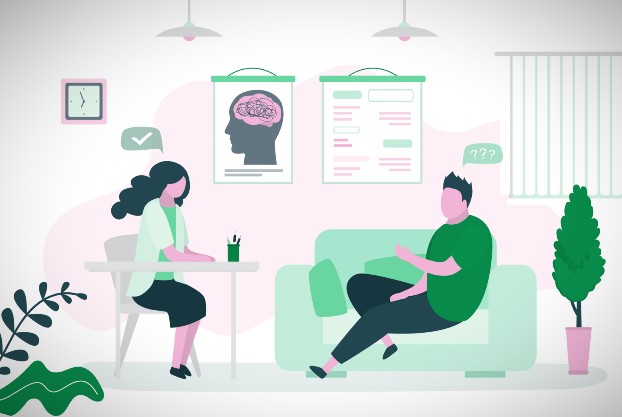Yoga has become an increasingly popular way to improve physical and mental wellbeing. Of the many forms of yoga, hatha is one of the most common. This gentle, slow-paced style focuses on physical postures and breathing techniques to bring balance, strength, and calmness. If you’re new to yoga and looking for a relaxing but effective practice, hatha may be right for you.
What is Hatha Yoga?
Hatha yoga is an ancient practice that originated in India thousands of years ago. The Sanskrit word “hatha” represents the union of opposites, referring to the merging of the sun (ha) and moon (tha) energies within the body. Unlike more vigorous forms of yoga, hatha focuses on slow, gentle movements and simple breathing exercises to realign the body, mind, and spirit.
The practice typically involves a series of poses called asanas that are held for a period of time and linked with the breath. This helps improve flexibility, circulation, and muscle tone while quieting the mind. Hatha is considered a foundational style that prepares the body for other types of yoga. It’s a great option for beginners looking to learn the basics.
Key Benefits of Hatha Yoga

Regular hatha yoga offers numerous benefits for both physical and mental health:
Improves Flexibility and Strength
The postures gently lengthen and strengthen the muscles, tendons, and joints. Over time, this leads to improved flexibility, mobility, and stability. Even simple poses can enhance muscle tone when held with proper alignment.
Reduces Stress and Anxiety
Deep breathing and relaxing stretches trigger the body’s relaxation response. This helps lower blood pressure, heart rate, and cortisol levels to keep anxiety and daily stress under control.
Boosts Mind-Body Awareness
Hatha yoga develops a stronger mind-body connection. As you learn to focus on bodily sensations and subtle alignments in each pose, you become more aware of your body’s needs and capabilities.
Enhances Posture and Balance
Proper postural alignment is key in hatha yoga. Regular practice can improve posture and balance both on and off the mat. This helps prevent injury and boost coordination.
Promotes Better Sleep
Soothing breathing techniques and meditative poses calm the nervous system. Practicing yoga in the evenings can lead to deeper, more restorative sleep.
What to Expect in a Hatha Yoga Class

Hatha yoga classes provide a gentle introduction for those new to the practice. While routines vary, most sessions include a combination of flowing sequences, longer-held poses, and seated or lying postures. Props like blocks and straps are often used to assist with alignment.
Here’s what you can expect in a typical hatha class:
- Breathing exercises (pranayama)
- Warm-up sun salutations
- A mix of standing and seated postures
- Balance poses like Tree or Eagle Pose
- Deeper stretches for the hips, hamstrings, and back
- Twists to wring out the spine
- Inverted poses like Downward-Facing Dog and Shoulder Stand
- Seated forward bends and hip openers
- Relaxation and meditation at the end (savasana)
Poses are held for a few breaths up to a minute or more. The instructor will offer posture modifications and hands-on adjustments as needed. Focus on moving at your own pace without pushing yourself too hard.
Beginner-Friendly Poses to Try
Hatha yoga offers many gentle, beginner-friendly poses to build strength and flexibility from head to toe. Here are some great starter poses to try as you build your practice:
Mountain Pose (Tadasana)
Stand with feet together and toes pointed forward, engaging leg muscles. Lift chest and elongate spine, relaxing shoulders downward. This pose promotes balance and proper posture.
Downward-Facing Dog (Adho Mukha Svanasana)
On hands and knees, tuck toes under and lift hips up and back to form an inverted V shape. Keep hands shoulder-width apart and pedal legs to stretch calves and hamstrings.
Triangle Pose (Trikonasana)
From a wide-legged stance, reach one hand down to shin as the other reaches upward. Keep hips and shoulders square and spine long. Deeply stretches legs and torso.
Tree Pose (Vrksasana)
Balance on one leg, shifting weight into supporting foot. Place other foot on ankle, shin, or inner thigh and raise arms overhead. Tones abs and improves concentration.
Child’s Pose (Balasana)
Kneel on floor and lower torso between thighs, extending arms in front. A gentle stretch and resting pose for the back, hips, and shoulders.
Tips for Starting a Hatha Yoga Practice

If you’re eager to get started with hatha yoga, keep these tips in mind:
- Explore beginner classes to learn proper form and alignment before trying poses on your own. Proper technique prevents injury.
- Wear comfortable, stretchy clothing that allows free range of motion. Avoid loose or restrictive outfits.
- Arrive early and bring any props needed, like a yoga mat, blocks, blanket, strap, or bolster.
- Listen to your body and don’t force yourself into any poses. Honor your limits to avoid strain or pain.
- Focus on your breath, inhaling and exhaling smoothly through each pose. Let the breath guide the movement.
- Be patient and don’t get discouraged as you gain flexibility and strength. Progress takes consistent practice.
Conclusion
For newcomers seeking a gentle entry into the world of yoga, hatha is an ideal place to start. This soothing, slow-paced practice combines physical poses, breathing techniques, and meditation to stretch the body, quiet the mind, and reduce stress. With its simple postures and relaxing pace, hatha helps build a solid foundation that leads to improved strength, balance, and flexibility over time. By starting a regular hatha yoga practice, you can enjoy valuable benefits for both body and mind.
FAQs About Hatha Yoga
What is the difference between hatha and vinyasa yoga?
Hatha focuses on holding poses over time, while vinyasa links poses together rapidly in a flowing sequence. Vinyasa is more vigorous and fast-paced.
How often should a beginner practice hatha yoga?
Aim for 2-3 sessions per week ranging from 30-60 minutes. Allow rest days in between to prevent overexertion or strain. Consistency is key.
What are some beginner-friendly hatha yoga poses?
Some great starter poses include Mountain Pose, Cat/Cow, Downward Dog, Standing Forward Bend, Tree Pose, and Bridge Pose. Don’t shy away from using props to assist you.
Will hatha yoga help me lose weight?
While not specifically aimed at weight loss, hatha can help burn calories and tone muscles. The combination of poses, breathing, and meditation also reduces stress hormones that drive cravings.
Is early morning or evening better to practice hatha?
It depends on your preference! Some people prefer mornings for increased energy and focus. Others like evenings to wind down. Do what works best for your schedule.








